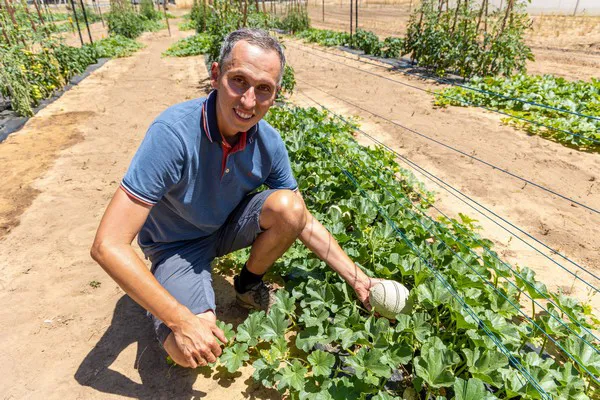Western Australia's Department of Primary Industries and Regional Development (DPIRD) has been researching the potential of using marginally saline water to irrigate horticulture crops, which could unlock underutilized water supplies in the state.
The department has commenced trials using marginally saline water on tomato, capsicum, and rockmelon crops at its South Perth research facility, which it says supports business resilience and industry expansion, and soil salinity measuring equipment will also be installed on growers' properties in the South West to monitor the impact of salt on crop performance.
 Photo: DPIRD research scientist Dr. Lukasz Kotula with soil moisture and salinity monitoring equipment used in a research trial
Photo: DPIRD research scientist Dr. Lukasz Kotula with soil moisture and salinity monitoring equipment used in a research trial
DPIRD research scientist Dr. Lukasz Kotula said a significant amount of moderate-quality groundwater of between 1000 and 3000 milligrams per liter of total dissolved solids (TDS) could potentially be available for horticulture production.
"It is estimated that there is conservatively more than 70GL of moderate quality groundwater in WA," Dr. Kotula said. "While much of the better quality water in the Swan Coastal Plain is already allocated to irrigators and other water users, there are large volumes of marginally saline water that is not being used for irrigation. In many other countries in the world, water above 1000 mg/L TDS is successfully used to irrigate crops. Our research project will provide valuable information on what quality marginally saline water could be used for different crops and management strategies, taking into account the local climate, rainfall, soil type, drainage, and leaching considerations."
He explained that crops differ in their tolerance to salinity, with tomatoes grown successfully in arid areas of China using water of about 3000mg/L TDS and capsicums grown in Israel with 1800mg/L TDS on sandy soil using appropriate irrigation management. WA's South West's sandy soils and significant winter rainfall – where accumulated salt leaches more readily than on heavier soils in dry climates – have advantages for irrigation with marginally saline water when suitable strategies are employed.
Dr. Kotula said the research project would examine the optimal irrigation type and frequency, soil moisture levels, mulch to reduce evaporation, time of year, and crop growth stage for saline water use in the South West.
"Applying additional water to leach salt from the crop's root zone is the major approach used to deal with irrigation using marginally saline water," he said. "It is very important to not let the soil dry out, as salt will concentrate in the root zone, causing plant damage. Irrigation by drip, where the foliage is not wet, allows for irrigation with higher levels of saline water than overhead irrigation, where the leaves get wet and foliar salt burn occurs. The chemical composition of the irrigation water, particularly the chloride and sodium content, will also be a significant factor in determining plant growth and not just the total dissolved solids."
Source: WA DPIRD Press Release
For more information
Dr. Lukasz Kotula
Department of Primary Industries and Regional Development
Tel.: +61 8 9368 3269
lukasz.kotula@dpird.wa.gov.au
